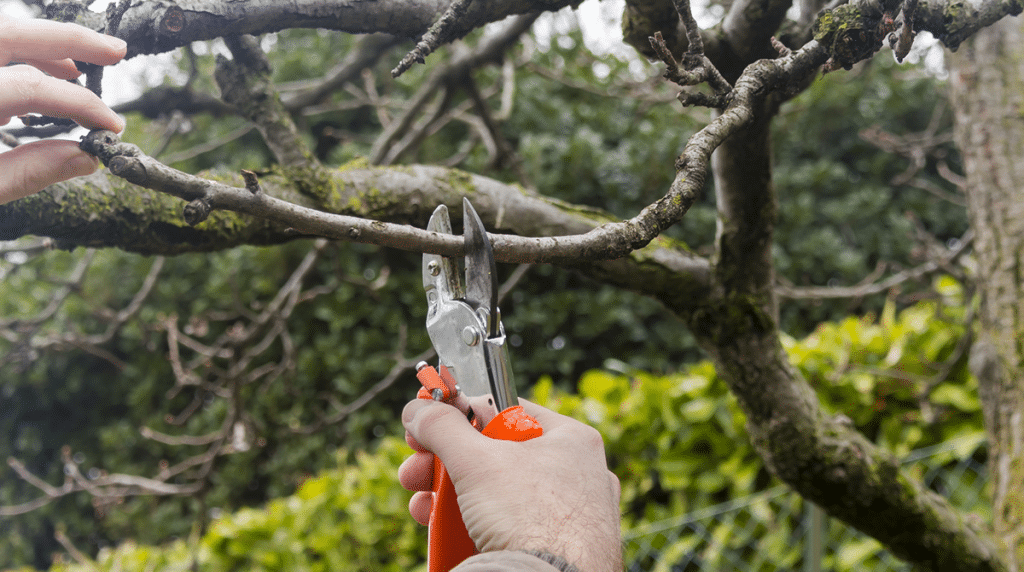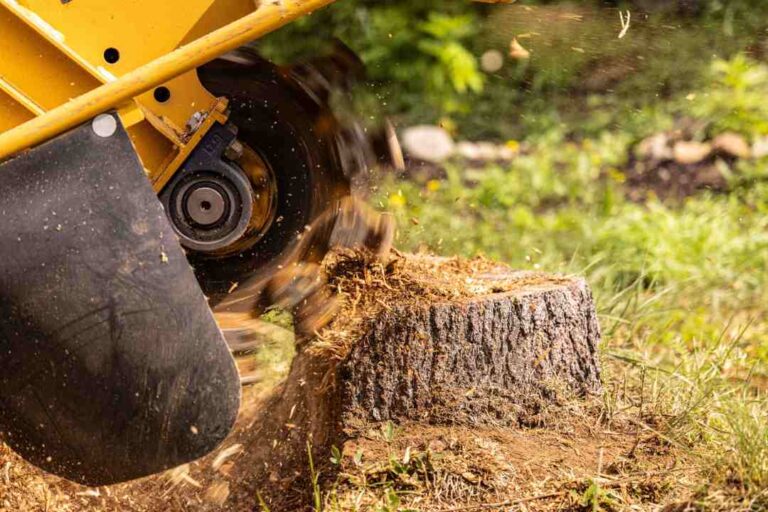The Difference Between Tree Trimming Sydney and Tree Pruning
What Is the Difference Between Tree Trimming and Tree Pruning in Sydney?
Tree trimming focuses on maintaining appearance and shape, while tree pruning targets health and structural integrity. These two tree care practices in Sydney serve distinct purposes that homeowners and professionals often confuse.
Sydney’s urban landscape relies heavily on proper tree maintenance to preserve its green canopy and ensure public safety. The city’s diverse tree population—from native eucalypts to exotic ornamentals—requires specialized care tailored to each species and situation.
Understanding the difference between tree trimming Sydney and tree pruning matters because using the wrong approach can harm your trees or waste resources. Trimming addresses aesthetic concerns and prevents minor hazards, while pruning involves strategic removal of branches to improve long-term tree health.
This article clarifies when to use each method, helping you:
- Identify which service your trees actually need
- Avoid costly mistakes that compromise tree vitality
- Communicate effectively with arborists about your tree care goals
The distinction between tree trimming vs tree pruning directly impacts your trees’ longevity and your property’s safety.

What Is Tree Pruning and Why Is It Important?
Tree pruning is the practice of selectively removing live branches from a tree to improve its health, structure, and safety. Unlike general cutting, which may remove branches indiscriminately, pruning focuses on specific branches that affect the tree’s long-term wellbeing and stability.
Techniques Used in Pruning
Arborists use several specialized techniques when pruning:
- Crown thinning removes select branches throughout the canopy to reduce density
- Crown raising eliminates lower branches to provide clearance for pedestrians, vehicles, or structures
- Structural pruning addresses weak or competing branches to develop a stronger framework
Each technique serves a distinct purpose in maintaining tree integrity and preventing future problems.
Benefits of Pruning
The benefits of pruning go beyond basic maintenance. Here are some key advantages:
- Improved air circulation: Proper pruning allows for better airflow through the canopy, reducing the risk of fungal diseases that thrive in humid, stagnant conditions.
- Increased sunlight penetration: By removing certain branches, more sunlight can reach inner branches and the ground below, promoting healthier growth patterns throughout the tree.
- Enhanced energy allocation: Pruning directs a tree’s energy toward productive growth rather than maintaining weak or damaged branches.
- Strengthened structure: This selective approach strengthens the tree’s framework, making it more resistant to storm damage.
- Reduced hazard potential: Regular pruning reduces the likelihood of falling limbs that could pose a threat to property or people.
When Should Pruning Be Done?
Timing is crucial when it comes to pruning trees. The best time for most pruning work is during the dormant season, which typically lasts from late fall to early spring. During this period, trees experience less stress from cutting and there is a lower risk of disease transmission due to reduced sap flow.
The Importance of Professional Expertise
While some basic pruning tasks can be done by homeowners, professional expertise is essential for effective pruning. Arborists have a deep understanding of tree biology and can identify structural weaknesses that may not be apparent to an untrained eye.
They also know which branches should be removed without compromising the overall health of the tree. Making incorrect cuts or removing too much foliage can leave trees vulnerable to pests, diseases, and environmental stressors.
In Sydney specifically, there are many different species of trees each with their own unique requirements when it comes to pruning. Trained professionals such as arborists are able to identify these specific needs and address them appropriately through their methods and techniques used during this process.
How Does Tree Trimming Differ from Pruning?
What exactly is tree trimming?
Tree trimming focuses on maintaining a tree’s shape and overall appearance through strategic branch cutting. This aesthetic tree maintenance practice primarily addresses overgrown or excess foliage to control size, preserve symmetry, and enhance visual appeal in residential and commercial landscapes.
The definition of tree trimming centers on cosmetic enhancement rather than structural improvement. Arborists remove branches that extend beyond desired boundaries, creating clean lines and balanced canopies that complement property aesthetics. This practice keeps trees looking manicured and well-maintained without necessarily addressing internal health concerns.
Can trimming protect your property?
Trimming serves a crucial protective function by clearing branches that threaten structures, power lines, or neighboring properties. Regular trimming prevents:
- Branches scraping against roofs or windows during storms
- Limbs interfering with electrical infrastructure
- Overgrowth blocking driveways or walkways
- Excessive shade limiting lawn growth beneath the canopy
When can you schedule trimming services?
Unlike pruning’s seasonal restrictions, trimming offers year-round flexibility. Property owners can address aesthetic concerns or safety hazards whenever they arise, making it a more accessible maintenance option for busy homeowners.
Is trimming easier than pruning?
Trimming requires less technical expertise since it deals primarily with outer branches and visible growth. The process doesn’t demand deep knowledge of tree biology or structural assessment. Simple trimming tasks may even be suitable for confident homeowners with proper safety equipment, though professional services ensure optimal results and safety compliance.
The key distinction lies in purpose: trimming shapes and controls, while pruning heals and strengthens. Sydney property owners benefit from understanding when each service suits their tree care need
When Should Tree Trimming and Pruning Be Done in Sydney?
Does timing matter for tree care in Sydney? Yes, timing significantly impacts the success of both tree trimming and pruning, though each practice follows different schedules.
When to Prune Trees in Sydney?
Seasonal pruning Sydney works best during the dormant season, typically from late fall through early spring (May to August). During this period, trees conserve energy and experience minimal sap flow, which reduces stress on the tree when branches are removed. Pruning in dormancy also lowers the risk of disease transmission, as many pathogens and pests remain inactive in cooler months. The absence of leaves makes it easier to assess the tree’s structure and identify which branches require removal for optimal health and safety.
When to Trim Trees in Sydney?
Year-round trimming Sydney offers greater flexibility since trimming focuses on aesthetics rather than structural health. Property owners can schedule trimming whenever branches encroach on buildings, obstruct views, or grow too close to power lines. Spring and summer trimming helps control rapid growth, while autumn trimming prepares trees for storm season by reducing wind resistance.
The Difference Between Tree Trimming and Tree Pruning
The difference between tree trimming Sydney and tree pruning becomes particularly evident in scheduling requirements. While pruning demands careful timing to protect tree health, trimming adapts to immediate needs and seasonal preferences.
What Are the Risks Associated with Improper Tree Trimming vs. Improper Pruning?
Over-trimming risks
Over-trimming can severely compromise a tree’s vitality and structural integrity. When too much foliage is removed at once, trees respond by producing rapid, weak growth known as water sprouts or suckers. This excessive regrowth drains the tree’s energy reserves and creates branches with poor attachment points that are prone to breaking during Sydney’s summer storms. Over-trimmed trees also lose their natural defense mechanisms, leaving them vulnerable to pests, diseases, and sunscald on newly exposed bark.
Improper pruning effects
Improper pruning presents different but equally serious dangers to tree health. Cutting branches at incorrect angles or locations creates wounds that struggle to heal properly, providing entry points for pathogens and decay organisms. Removing too many live branches during active growing seasons places enormous stress on the tree’s vascular system, potentially triggering decline or dieback. Poor pruning cuts that leave stubs or strip bark can permanently damage the tree’s compartmentalization ability—its natural process of isolating wounds.
Structural damage from improper pruning techniques includes:
- Creating weak branch unions that may fail unexpectedly
- Removing too much canopy weight from one side, causing imbalance
- Cutting into branch collars, preventing proper wound closure
- Lion’s tailing (removing inner foliage while leaving end growth), which increases wind resistance and breakage risk
Why Is Professional Expertise More Critical for Tree Pruning Than Trimming?
Does tree pruning require more skill than trimming?
Yes, pruning demands extensive [arborist expertise](https://www.treeservicessydney.com.au/) professionals possess because it involves complex decisions about a tree’s internal structure and long-term health. Unlike trimming’s focus on outer appearance, pruning requires identifying which branches to remove without compromising the tree’s stability or biological functions.
What knowledge do arborists need for safe pruning?
Professional arborists must understand tree biology, including how trees compartmentalize wounds and respond to cuts. They assess branch collar locations, recognize co-dominant stems that create weak unions, and identify which branches provide structural support. Removing the wrong branch can redirect growth patterns in harmful ways or create entry points for pathogens and pests.
The professional pruning benefits extend beyond immediate results:
- Proper cut placement promotes faster wound closure and reduces decay risk
- Strategic branch selection maintains the tree’s natural defense mechanisms
- Knowledge of species-specific growth habits prevents unintended consequences
- Understanding weight distribution prevents future limb failure
Can improper pruning cause permanent damage?
Incorrect pruning techniques like flush cuts or stub cuts disrupt the tree’s natural healing process, leaving it vulnerable to disease and structural weakness for years. Arborists trained in Sydney’s native and introduced species recognize how different trees respond to pruning stress, adjusting their approach to match each tree’s unique characteristics and health status.

How Do Tree Trimming and Pruning Contribute to Urban Tree Health in Sydney?
Urban forestry Sydney relies on both trimming and pruning to maintain thriving tree populations across residential and commercial areas. Healthy trees deliver measurable benefits: a mature tree can reduce surrounding air temperatures by up to 5 degrees Celsius while filtering pollutants and particulate matter from the atmosphere.
Shade trees maintenance through proper pruning extends canopy lifespan and maximizes cooling effects in Sydney’s increasingly warm climate. Trees maintained through strategic pruning develop stronger branch architecture, reducing the likelihood of limb failure during storms—a critical consideration in densely populated suburbs where property damage risks are high.
Understanding The Difference Between Tree Trimming Sydney and Tree Pruning allows urban forestry managers to allocate resources effectively. Pruning addresses structural deficiencies and health concerns that, if left unmanaged, could necessitate complete tree removal. Trimming maintains clearances around infrastructure and preserves sightlines without compromising tree vitality.
Sydney’s urban forestry management strategies incorporate both practices into scheduled maintenance programs:
- Pruning cycles target young trees every 3-5 years to establish proper structure
- Trimming schedules address mature trees annually for clearance and aesthetic maintenance
- Risk assessments determine which technique addresses specific tree conditions
Trees receiving appropriate care contribute to property values, with well-maintained street trees increasing home values by 7-15% according to urban planning research. The combined application of trimming and pruning creates resilient urban forests that withstand environmental stressors while enhancing neighborhood livability.
Conclusion
Knowing the difference between tree trimming Sydney and tree pruning helps property owners make informed decisions about how to care for their trees. Each practice has a specific purpose—pruning focuses on long-term health and structure, while trimming keeps the appearance neat and prevents immediate dangers.
Using the right method at the right time protects your investment in Sydney’s urban environment. Trees that receive proper care through comprehensive tree care Sydney services provide maximum benefits: cleaner air, cooler temperatures, and increased property values. Homeowners who understand when to schedule pruning during dormant seasons versus year-round trimming needs set their trees up for many years of healthy growth.
Professional arborists have the necessary knowledge to make pruning decisions, where errors can permanently damage tree structure. For trimming jobs, although simpler, using the correct technique is still important to avoid weakening your trees by cutting too much. Sydney’s urban forest relies on property owners who know these differences and commit to sustainable tree management practices that benefit entire neighborhoods.
Read more: What Makes Local Experts the Go-To for Tree Lopping Services in Sydney



